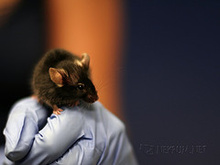Every day around 30,000 aircraft take to Europe’s skies. Choreographing this airborne dance is daunting. At the moment, it’s orchestrated by the disparate air traffic management systems of each European country, with control handed over at border crossings. The aeronautics research team at the University of Malta is part of an ambitious EU project to change that by establishing a single European sky, enabling EU air traffic controllers to manage increasing amounts of traffic with greater safety, lower costs, and a reduced environmental impact.
 One of the things I love about writing is the way it feels like an endless journey of discovery, constantly offering opportunities to learn about new subjects (and to revisit familiar ones from a different angle). I recently wrote an article for the University of Malta’s Think Magazine about their aeronautics team’s research; I’d never given much thought to air traffic management before, and I really enjoyed learning a bit about the field. It turns out to be a pretty active area of research, full of challenging problems, interesting solutions, and important practical considerations. I really enjoyed writing the article, and it’s available for free on Think‘s website in case you want to learn more about the choreography of the skies.
One of the things I love about writing is the way it feels like an endless journey of discovery, constantly offering opportunities to learn about new subjects (and to revisit familiar ones from a different angle). I recently wrote an article for the University of Malta’s Think Magazine about their aeronautics team’s research; I’d never given much thought to air traffic management before, and I really enjoyed learning a bit about the field. It turns out to be a pretty active area of research, full of challenging problems, interesting solutions, and important practical considerations. I really enjoyed writing the article, and it’s available for free on Think‘s website in case you want to learn more about the choreography of the skies.
(Image courtesy FlightRadar24.com. If you’ve got a few minutes to spare, go play with it — it’s fun to see the patterns in planes’ routes!)
 Since plants generally can’t move around, they have to rely on other strategies to cope with animals eager to turn them into a meal. Chemical weapons are a significant part of plants’ defensive arsenal. For example, thousands of plant species produce precursors of the deadly poison hydrogen cyanide; when an animal eats the plant, the precursors get converted into cyanide, which kills the offending animal. Continue reading
Since plants generally can’t move around, they have to rely on other strategies to cope with animals eager to turn them into a meal. Chemical weapons are a significant part of plants’ defensive arsenal. For example, thousands of plant species produce precursors of the deadly poison hydrogen cyanide; when an animal eats the plant, the precursors get converted into cyanide, which kills the offending animal. Continue reading 



You must be logged in to post a comment.